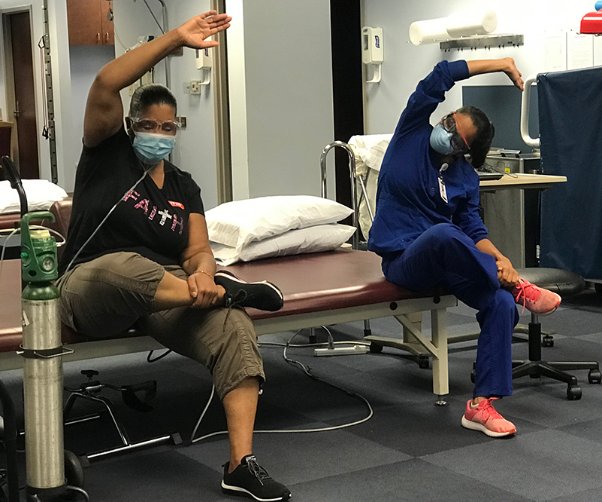
How yoga and physical therapy are blending to enhance the patient experience
What is yoga and how does it connect with physical therapy?
While it is relatively new in the West, yoga is well-established in many countries and older than "Western" medicine — originating in the East thousands of years ago. Yoga is on the rise and making an impact on conventional physical therapy.
Yoga incorporates meditations, breathing exercises and self-reflection — along with body alignment work and balance poses to foster physical, mental and spiritual health.
Incorporating yoga practices into cardiac physical therapy routine benefits patients during the session, in addition to afterwards as the patient returns to their normal activities.
What are the benefits of yoga-like therapy?
Yogic practices have a maximum effect in controlling and/or maintaining blood pressure and aiding in the relaxing of the stressed heart muscles — and once the muscles are relaxed, they work more efficiently.
In cardiac patients, yogic practices yield long term benefits that help control the heart by training the mind and practicing breathing techniques. Yoga also helps with increasing activity tolerance, helping with energy levels or improving fatigue, improving immunity levels, regaining muscular flexibility and strength — which may have been compromised in cardiac patients after a heart attack, bypass surgery or another cardiac event.
Incorporating yogic practices not only foster the physiological stresses, but it also helps with psychological stresses many patients may be under — like depression after a patient learns a health issue — by calming the mind.
Yoga may lead patients to a clearer path of recovery and rehabilitation.
Are you incorporating actual yoga or are the practices/therapies similar to yoga?
Yoga is vast and there are multiple schools of thought regarding yogic practices. We incorporate the pranayama (or the breathing exercises), asana (or the postures) and meditation into our scope of practice.
SUBSCRIBE TO OUR BLOG
and you'll receive more health & wellness tips right in your inbox.
SUBSCRIBE NOWDo you offer these yoga-like practices to other patients or just cardiac patients?
Incorporating yoga-like practices into rehabilitation sessions benefits patients of all ages and it is not limited to cardiac patients.
For orthopedic patients, yoga helps with pain management. For patients with breathing issues or COPD, it helps with retraining their breathing patterns and improving the capacity if their lungs. For patients with stroke or neurological conditions, the practice may help with improving balance or flexibility.
The scope is immense and the utilization of the yogic practices depends largely on the provider, which is not limited to rehab therapy, but also nurses and doctors — the whole team who is taking care of the patients.
Is it a short-term fix or should the patient continue with the yoga therapy well after their recovery?
Attending physical therapy or any rehab using any approach is just a kickstart. For lasting effects, continuation is the key. Completing rehabilitation is actually first step towards the journey of life style modification.
Do you find that adding these practices into the patient’s therapy routine help to speed the recovery time?
More research is needed in this area, but there are studies that suggest yogic practices — if used in conjunction with conventional physical therapy — help with treating multiple facets or symptoms together. That means you are potentially speeding up recovery, improving muscle movement and focusing the mind. Thus, you rejuvenate and reform.
In conclusion:
While physical therapy is an art and a science of treating the body ailments, the practice of yoga connects the mind with the body.
The more we learn about the benefits of these seemingly different approaches or aspects of health, the more we realize that the combination of the two goes beyond just the physical healing of a patient.
If treating and transforming the patient rather than just the disease is your intention, then consider integrating yoga therapy into your routine not only when treating patients but also when caring for yourself as a healthcare provider or caregiver. You will be amazed at what happens!
About the author:
Khushboo Kabra PT, DPT, CKTP is a trained physical therapist. She received her certification in yoga while pursuing a master’s degree in physical therapy.
Khushboo has been working as a PT with Methodist South Hospital for more than five years. Although she treats a variety of patients, she has a special interest in patients with Cardio Pulmonary conditions, patients with Orthopedic conditions or surgeries and patients with sports-related injuries. She is also a certified Kinesio Taping practitioner.
Still Have Questions About Your Overall Health?
Schedule an appointment with one of our primary care physicians.
Related Articles


